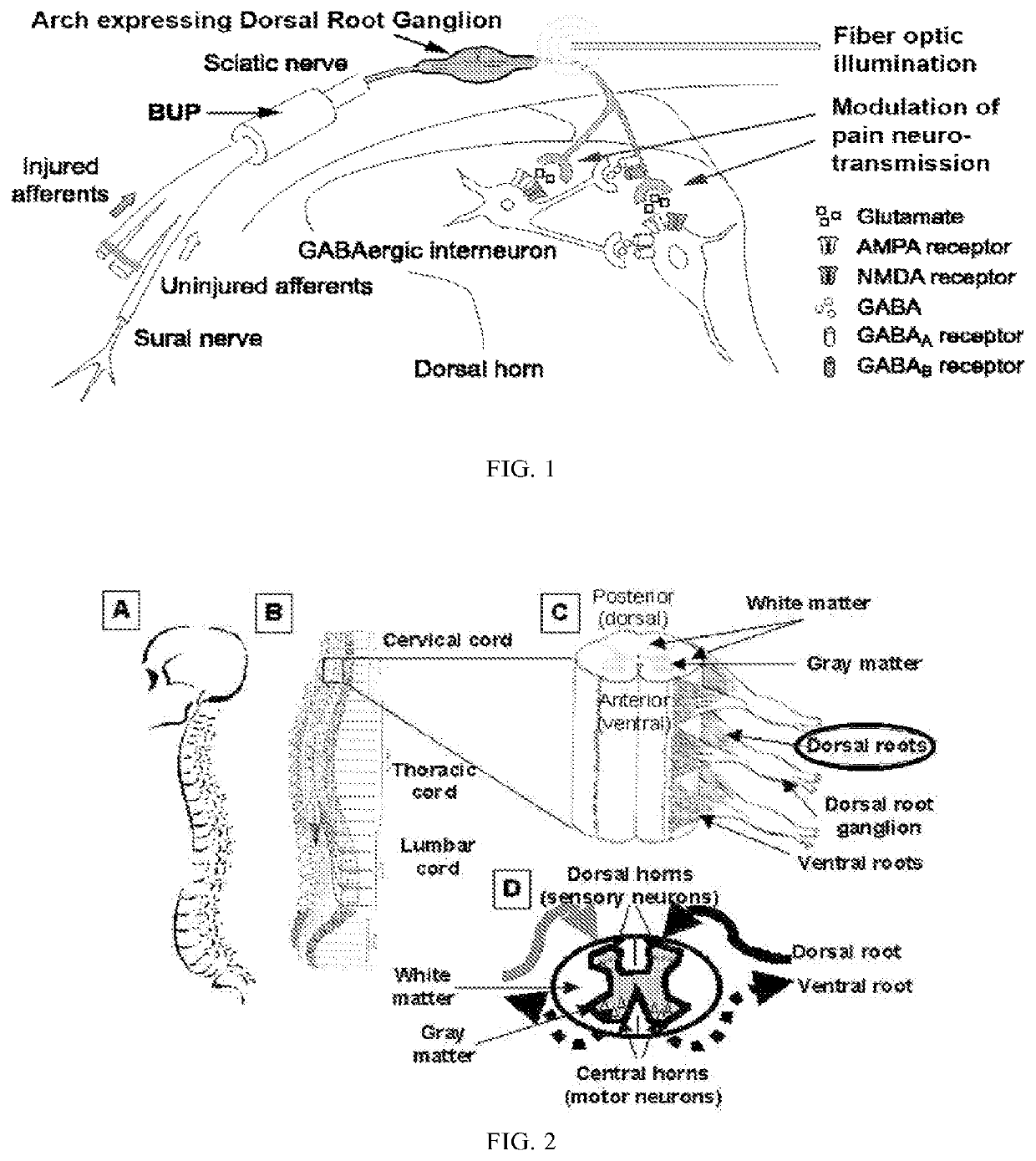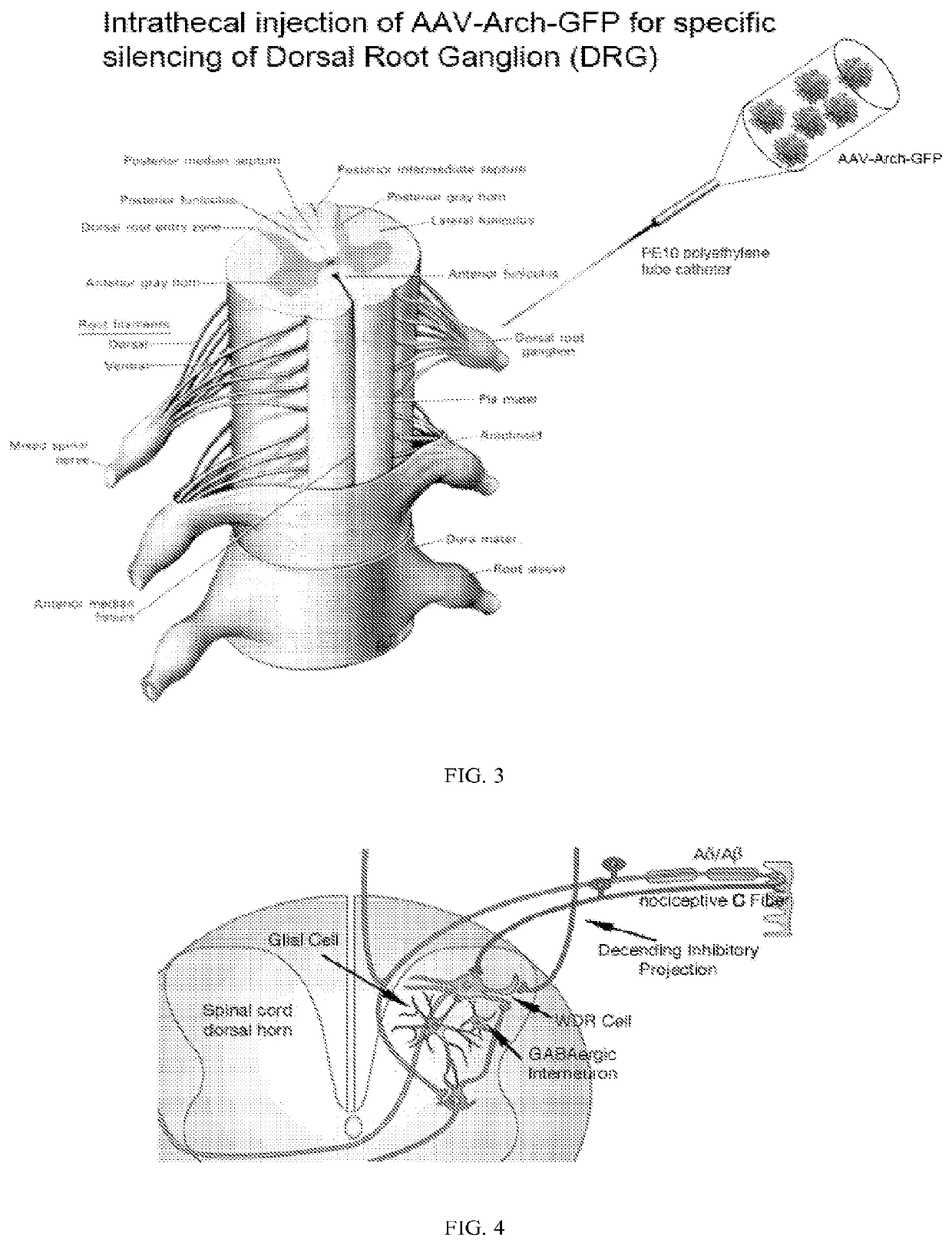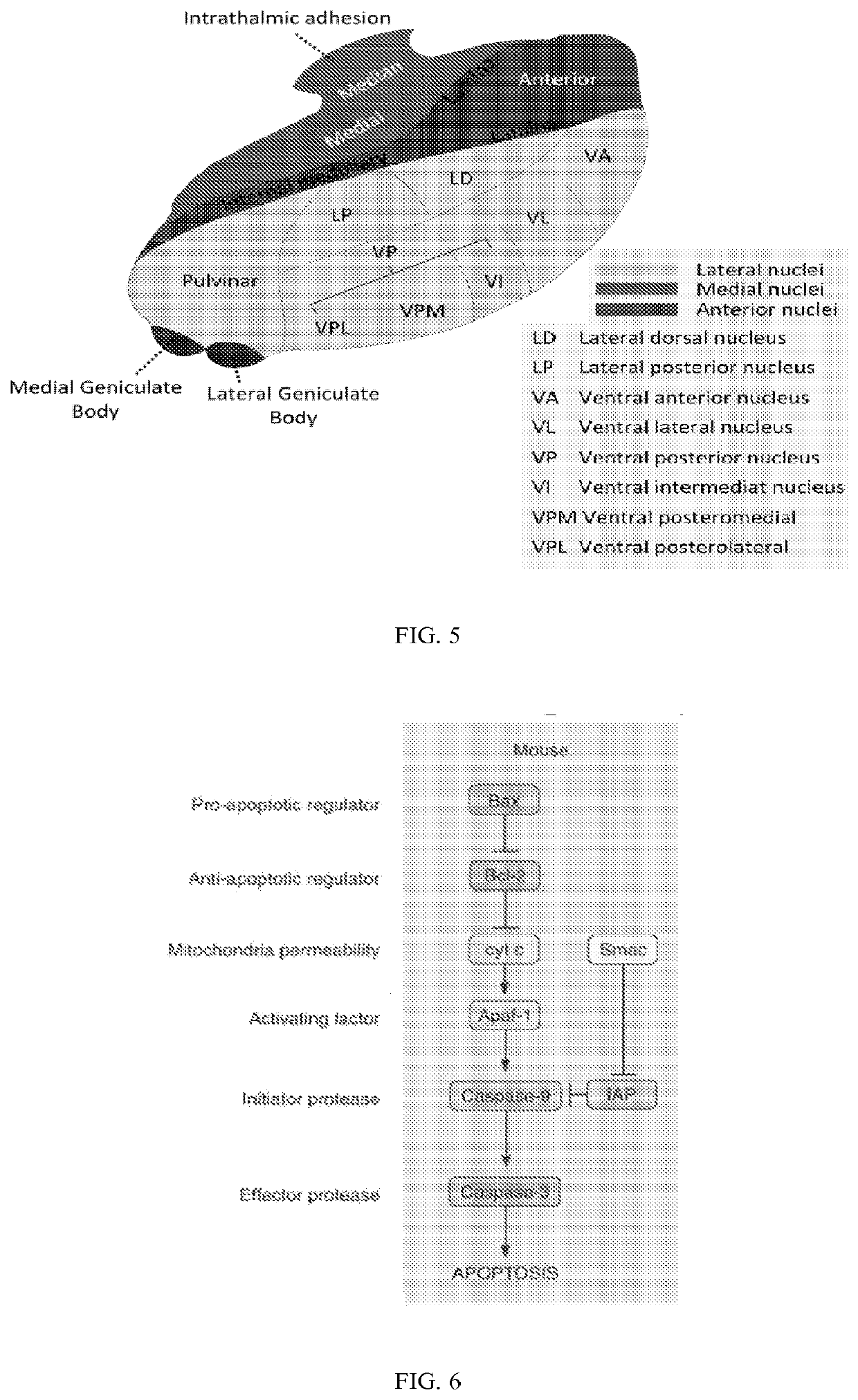Methods and compositions for decreasing chronic pain
a composition and chronic pain technology, applied in the field of chronic pain reduction methods and compositions, can solve the problems of reducing the quality of life and productivity, affecting physical and mental ability, and more invasive approaches such as surgery and electrical stimulation also modulate the pain pathway with poor specificity, so as to relieve neuropathic pain, relieve neuropathic pain, and high spatial and temporal precision
- Summary
- Abstract
- Description
- Claims
- Application Information
AI Technical Summary
Benefits of technology
Problems solved by technology
Method used
Image
Examples
example 1
[0161]rAAV Modifications to Increase IT Gene Transfer Efficacy
[0162]Conventional single-stranded rAAV2 vectors perform poorly after IT delivery in rats; expression can be detected only by highly sensitive methods like quantitative PCR even after administration of high vector doses. Confronted with this finding, we reasoned that rAAV2 could fail because of two roadblocks: Firstly, failure of target cells to take the vector up due to lack of compatible cell surface receptors, and secondly, second-strand DNA synthesis, which could be a limiting step especially in a quiescent tissue. Pseudotyping of rAAV with capsids of serotypes 1, 3 and 5 was tested alone or in combination with a modification of the ITR. The former alters vector tropism and the latter allows packaging of sc-rAAV vectors. Combining both types of modification led to the identification of sc-rAAV1 as a vector that performed superiorly in the IT space. IT delivery of 3×109 sc-rAAV1 particles per animal led to stable expre...
example 2
Targeting of DRG Neurons
[0164]One property of rAAV vector modified as above, that is, sc-rAAV1 and sc-rAAV8, was their remarkable ability to express the recombinant transgene highly effectively, and almost exclusively (>99%) in the primary sensory neurons. This was unexpected, because IT administration of other vectors fails to target neurons (for example, plasmids or adenovirus transduce meningeal fibroblasts). Primary sensory neurons are, perhaps, the ideal target for pain gene therapy. This point has been shown by a long series of studies with herpes simplex virus, a vector that targets sensory neurons if administered subcutaneously. Microscopic examination of the brain, spinal cord, DRGs, nerve roots and meningeal linings 1 month after administration of sc-rAAV8 expressing the marker gene EGFP (under the control of the CMV promoter / enhancer) revealed strong specific EGFP fluorescence, exclusively in DRG neurons and their axons, and dendrites entering and exiting the DRG (FIG. 8)...
example 3
Testing in a Rat Neuropathy Model
[0165]Beutler, A. S., et al., J Neurochem 64, 475-481 (1995) chose the L5 spinal nerve ligation (SNL) rat model of neuropathic pain, Chung, J. M., et al., Methods Mol Med 99, 35-45 (2004), to assess the efficacy of IT sc-rAAV8 for pain using two different known analgesic genes, namely prepro-beta-endorphin (ppβEP) and recombinant interleukin-10 (rIL-10). ppβEP is an artificial gene that has been developed earlier y this group. It was found to induce secretion of PEP, which acts as μ-opioid receptor agonist. Beutler, A. S., et al., J Neurochem 64, 475-481 (1995); Finegold, A. A., et al., Human gene therapy 10, 1251-1257 (1999). Additionally, one could consider the use of a transgene whose anti-allodynic activity may not rely on opioid receptor activation. As an example, Beutler et al. chose rIL-10, which is believed to exert its known analgesic activity in neuropathic pain through suppression of glial activation through its anti-inflammatory activity....
PUM
| Property | Measurement | Unit |
|---|---|---|
| wavelength | aaaaa | aaaaa |
| wavelength | aaaaa | aaaaa |
| wavelength | aaaaa | aaaaa |
Abstract
Description
Claims
Application Information
 Login to View More
Login to View More - R&D
- Intellectual Property
- Life Sciences
- Materials
- Tech Scout
- Unparalleled Data Quality
- Higher Quality Content
- 60% Fewer Hallucinations
Browse by: Latest US Patents, China's latest patents, Technical Efficacy Thesaurus, Application Domain, Technology Topic, Popular Technical Reports.
© 2025 PatSnap. All rights reserved.Legal|Privacy policy|Modern Slavery Act Transparency Statement|Sitemap|About US| Contact US: help@patsnap.com



